Bac Ha Market & Sapa Trekking Midscale Tour From Hanoi – 2 Nights 3 Days
-
3 Star Accommodation
-
Every Friday
-
Group Tour
-
Meals
-
Seat in Coach
-
Tour Guide
Description
Bac Ha Market & Sapa Trekking Midscale Tour From Hanoi – 2 Nights 3 Days – Located in the northern highlands of Vietnam, Bac Ha Market is renowned for its vibrant and colourful atmosphere, drawing ethnic minority groups from surrounding villages who come to trade goods, socialize, and showcase their traditional attire. As you wander through the bustling market, you’ll encounter an array of local products, from fresh produce and handmade crafts to intricate textiles and exotic spices. This experience provides a unique glimpse into the rich customs and traditions of the region’s diverse ethnic communities.
Following the lively market experience, the journey continues with an easy trekking tour in Sapa, a picturesque town nestled in the Hoang Lien Son mountain range. Sapa is famed for its breathtaking terraced rice fields, verdant valleys, and majestic peaks. The trekking routes are designed to be accessible for all fitness levels, ensuring a leisurely yet enriching experience. As you traverse the trails, you’ll pass through charming villages inhabited by Hmong, Dao, and other ethnic groups, each with their own distinct cultural heritage. The opportunity to interact with local villagers and observe their daily lives adds depth to the trek, offering a meaningful connection to the land and its people.
The tour typically begins and ends in Hanoi, the vibrant capital city of Vietnam. Transportation is arranged to ensure a comfortable and seamless journey, allowing you to focus on the beauty and cultural richness of your destinations. Whether you’re marveling at the kaleidoscope of colors at Bac Ha Market or soaking in the serene landscapes of Sapa, this tour promises an unforgettable experience that highlights the natural and cultural treasures of northern Vietnam.
Tour Itinerary
Day 1: Hanoi – Sapa – Cat Cat Village | Lunch & Dinner |
06.00 – 06.30: Our bus and tour guide will pick you up at your hotel in hanoi old quarter, then depart to Sapa, following Noi Bai – Lao Cai highway.
Along the way, you will enjoy by the beauty of northwest mountains, terraced fields are sparkling in sunlight or dim in thick fog. Stop and have a rest in 30 minutes.
13.00: Arrive in Sapa. Check in the hotel and have Lunch in hotel.
14.00: Tour guide and guests walk to visit Cat Cat village, start the journey to discover the village Visit Cat Cat village of the H’mong. Visitors will be able to visit and learn about the customs and habits of ethnic minorities. Visit Cat Cat waterfall and hydroelectric power plant built by the French in the early 20th century, have fun and take souvenir photos.
19.00: Have dinner at the restaurant with specialties bearing bold features of the Northwest mountains: forest vegetables, stream fish, Ban pig… and enjoy the apple cider in the cold air. wonderful romantic feelings. After dinner, the group is free to visit (Sapa night market meets daily) with local products: Brocade, white silver. You are free to explore Sapa, Sapa Church (Saturday night at the Church area often takes place the Love Market session – is an attractive tourist destination for both domestic and foreign tourists when participating in Sapa tours.)
Day 2: Sapa – Y Linh Ho – Lao Chai – Ta Van – Sapa | Breakfast, Lunch & Dinner |
08.00: Following breakfast at your hotel, Tour guide pick you up at your hotel and start to trekking to Y Linh Ho village and then start hiking through the rice terraces along Muong Hoa Stream to Lao Chai, the village of Black H’mong minority. Here you will enjoy the spectacular landscape of Hoang Lien Son mountain ranges. Pass several tribal villages, including Lao Chai and Ta Van, home to the Black H’mong, Dzao and Dzay minority peoples.
11.30 – 12.00: Having lunch at Ta Van village and rest
13.00 – 15.00: Tour guide will take you to visit the villages of the local people with erraced fields and streams.
15.00 – 15.30: Come back Sapa Town by car.
18.00: Having dinner at hotel. Sleeping at hotel
Day 3: Sapa – Bac Ha Market – Hanoi | Breakfast & Lunch |
06.30: Have breakfast at your hotel.
07.00: Pick up at hotel. It takes 3 hour driving to Bac Ha market. At the market you will also meet Flower Hmong (Red Hmong), Black Dao, Tay, Nung, La Chi, Phu La and other tribal groups who come from far and wide to buy and sell a wide variety of goods and livestock, to exchange news and to renew friendships. In the past the market was a centre for trading horses but now that motorbikes have replaced them it is more common to see buffalo, cows, goats, fish and other. Continue the trip to Hoang A Tuong Royal Palace.
12.00: Lunch at local restaurant.
13.30: Trek to Ban Pho village of the Flower H’Mong people, to see their house, the daily life, understand little more about their lifestyle and traditional customs. Especially, we can try homemade wine from corn. Drive back to Sapa, 110 km in about 3 hours ride. En-route, stop to see Trung Do village of the Tay people (if time permits).
16.30: Arrival in Lao Cai , the bus stops at the restaurant, you wait at the restaurant then the sleeper bus picks you up and returns to Hanoi.
21.00: Arrive in Hanoi. Bus drop off at Tran Quang Khai street. End tour.
Note: Bookings falls into Xmas, New Year and Vietnamese Lunar New Year (Tet) may subject to the peak seasonal surcharge apply.
Tour Inclusion
- AC sleeper bus transfers Hanoi – Sapa – Hanoi
- 02 Night at 3 star accommodation in Delta Sapa Hotel or similar
- Experienced Vietnamese English speaking guide
- Meals as mentioned on itinerary (Breakfast, Lunch & Dinner)
- Entrance fees
- Trekking level: 4/10 (8 KM trekking round trip Cat Cat Village)
- Home-stay at the Dzay local house in Tavan Village
- Trekking level: 6/10 (12 Km of trekking Y Linh Ho Village)
Tour Exclusion
- VAT invoice, travel insurance
- Additional fee if there is any change in ticket prices
- Beverages for meals and other personal expense
Children Policy
- Free for children with ages from 1 to 3 (no meal, no seat, no ticket)
Consideration
- You have to bring your Passport
- You should bring any type of medicine for preventing insects and common diseases
- Tour guide can rearrange the schedule, but all places stay the same
- If you are a vegetarian, you can bring your own food to suit your taste (if necessary)
Faq
Trekking in Sapa, a picturesque town nestled in the Hoàng Liên Son Mountains of northern Vietnam, offers a unique blend of challenges and rewards. The difficulty of trekking in Sapa largely depends on the specific routes chosen and the trekker's physical condition. For beginners or those seeking a more leisurely experience, there are relatively easy trails that meander through rice terraces and charming ethnic minority villages, offering breathtaking views without overly taxing the body. These trails often feature gentle slopes and well-trodden paths, making them accessible to most people with a basic level of fitness. For those looking for a more strenuous adventure, Sapa also boasts more challenging routes that can test even experienced trekkers. These trails may involve steep ascents and descents, rough terrain, and potentially unpredictable weather conditions, especially during the rainy season. Trekking to the summit of Fansipan, known as the "Roof of Indochina," is one such demanding hike, requiring a good level of fitness, proper gear, and sometimes a local guide. The reward, however, is an unparalleled panoramic view that makes the effort worthwhile. Regardless of the chosen path, preparation is key to a successful trekking experience in Sapa. Proper footwear, adequate hydration, and weather-appropriate clothing are essential. Additionally, understanding one's physical limits and allowing for acclimatization to the altitude can help ensure a safe and enjoyable trek. Overall, while the difficulty of trekking in Sapa can vary, the stunning landscapes and unique cultural encounters make it a memorable adventure for anyone willing to explore its trails.
Trekking in Sapa, a picturesque town in Vietnam's northern mountains, is a bucket-list adventure for many outdoor enthusiasts. The best month to trek in Sapa largely depends on what type of experience you are seeking. However, April and October are often recommended as the prime months for trekking, offering ideal weather and breathtaking scenery. April is a wonderful time to trek in Sapa due to the mild climate and the lush, green landscapes. During this month, temperatures range from 15°C to 22°C (59°F to 72°F), making the weather comfortable for long hikes. Additionally, the terraced rice fields start to come alive with new growth, presenting a vibrant, verdant backdrop for trekkers. The spring season also brings fewer crowds compared to the summer months, allowing for a more peaceful and immersive experience. October, on the other hand, is renowned for its stunning autumnal beauty. The weather is cool and crisp, with temperatures ranging between 10°C and 18°C (50°F to 64°F). This month offers clear skies and minimal rainfall, perfect for capturing panoramic views of the terraced rice fields, which turn a golden hue as the harvest season approaches. The cultural richness of Sapa, combined with its natural splendor, makes October a favored time for many trekkers looking for both adventure and tranquility. Ultimately, the best month to trek in Sapa depends on your personal preferences and what kind of experience you are seeking. Whether you choose the lush greenery of April or the golden landscapes of October, Sapa promises a memorable trekking journey filled with breathtaking views and cultural encounters.
The Sapa Trek, located in the northern highlands of Vietnam, is widely regarded as a must-do adventure for travelers seeking an authentic and immersive experience. This trek offers a unique blend of natural beauty, cultural richness, and physical challenge, making it a rewarding endeavor for those who undertake it. The stunning terraced rice fields, lush green valleys, and picturesque mountains provide a breathtaking backdrop for the journey, allowing trekkers to connect with nature in an unparalleled way. One of the highlights of the Sapa Trek is the opportunity to interact with the local ethnic minority communities, such as the Hmong and Dao people. These communities have preserved their traditional ways of life and are known for their vibrant clothing, intricate embroidery, and warm hospitality. Staying in homestays within these villages offers a glimpse into their daily lives and traditions, creating an enriching cultural exchange. Visitors often leave with a profound appreciation for the resilience and simplicity of the local way of life. While the trek can be physically demanding, it is accessible to a wide range of fitness levels with various routes and durations available. The challenge of navigating through rugged terrain and varying weather conditions adds to the sense of accomplishment upon completion. For those who appreciate the combination of natural beauty, cultural immersion, and physical activity, the Sapa Trek is undeniably worth it. The memories and experiences gained from this journey are likely to leave a lasting impression and a deep connection to this unique region of Vietnam.
Sapa, a picturesque town in the northern mountains of Vietnam, has long been a favorite destination for travelers seeking stunning landscapes, rich culture, and unique experiences. Over the past few decades, however, it has transformed from a tranquil, off-the-beaten-path location into a bustling tourist hotspot. This shift has led to a debate among travelers and locals alike about whether Sapa has become too touristy. On one hand, the influx of tourists has undeniably brought economic benefits to the region. Increased tourism has led to better infrastructure, more job opportunities, and improved living standards for many local communities. The vibrant market in Sapa town, where ethnic minorities like the Hmong and Dao people sell their handicrafts, has become a thriving center for commerce and cultural exchange. Additionally, the development of hotels, restaurants, and tour services has made Sapa more accessible and comfortable for visitors from around the world. On the other hand, the rapid growth of tourism has also brought challenges. The once pristine landscapes are now dotted with construction projects, and popular trekking routes can be crowded with groups of tourists. Some argue that the commercialization of Sapa has led to a loss of authenticity, with traditional customs and ways of life being overshadowed by the demands of the tourism industry. The environmental impact of increased foot traffic and waste management issues also raises concerns about sustainability. Ultimately, whether Sapa is "too touristy" depends on individual perspectives. For those seeking an untouched, serene escape, Sapa's growing popularity might be a drawback. However, for travelers interested in cultural exchange and the conveniences of a well-developed tourist destination, Sapa still holds immense appeal. Balancing the benefits of tourism with the preservation of Sapa's natural beauty and cultural heritage is crucial for the town's future.
When planning a trip to Sapa, a picturesque region in northern Vietnam known for its stunning terraced rice fields and diverse ethnic communities, it’s important to consider the varying climate and activities you will be engaging in. Sapa's weather can be quite unpredictable, often shifting from sunny to rainy in a matter of hours, and it also experiences significant temperature differences between day and night. Layering is key when dressing for Sapa. Start with a moisture-wicking base layer to keep sweat off your skin. On top of this, wear a lightweight shirt or blouse that allows for ventilation during the warmer parts of the day. Carry a warm fleece or down jacket for the cooler mornings and evenings, as temperatures can drop significantly. A waterproof outer layer, such as a rain jacket or poncho, is essential to protect against sudden showers. Footwear is another critical consideration. Choose sturdy, comfortable hiking boots or shoes with good grip, as many of Sapa's most beautiful spots are reached via trekking through sometimes muddy and uneven terrain. Don't forget to pack a hat, sunglasses, and sunscreen for daytime protection, and bring along a scarf or beanie for added warmth when temperatures dip. With the right clothing and gear, you'll be well-prepared to enjoy all that Sapa has to offer, from adventurous hikes to exploring local markets and villages.
From $104.00

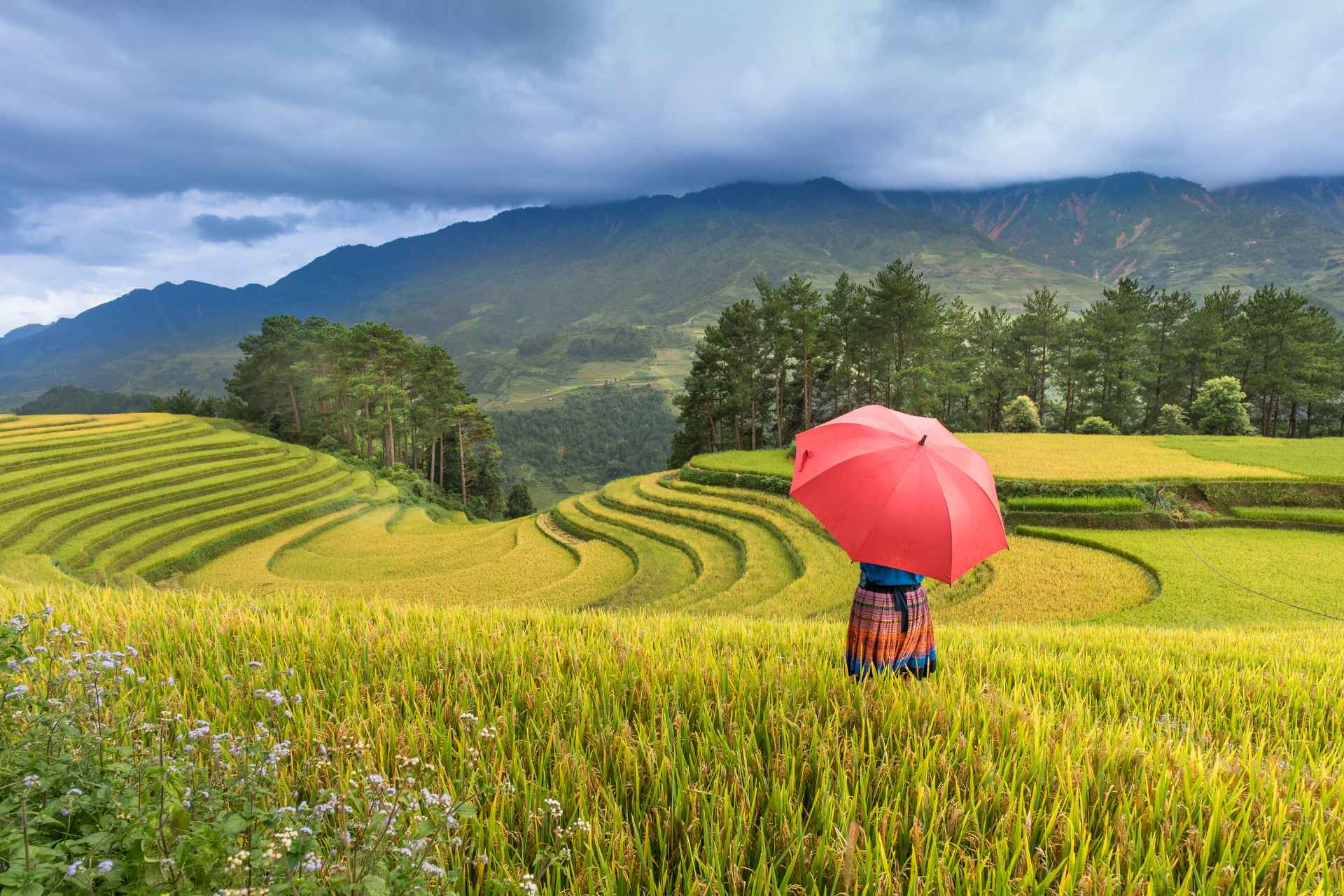



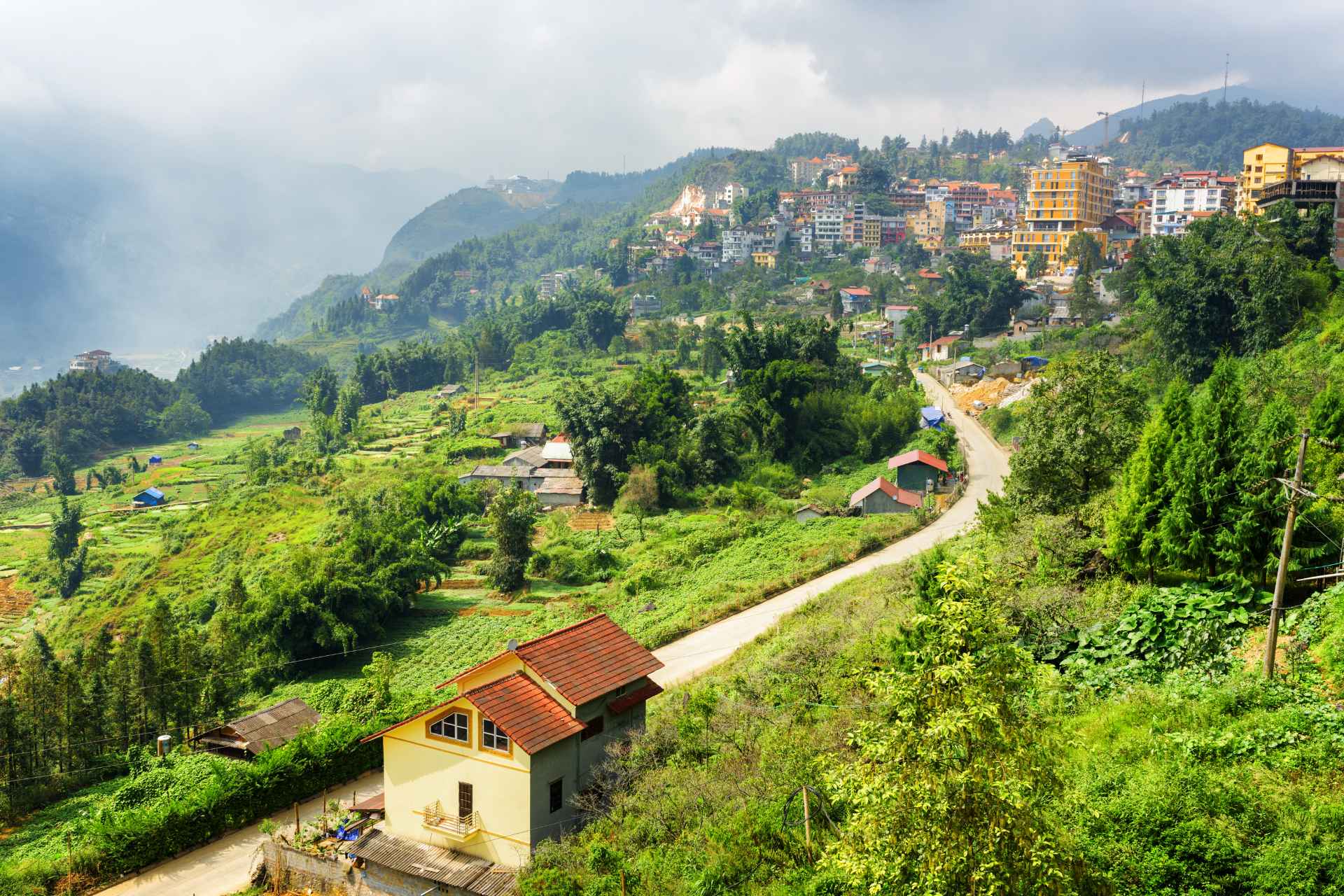

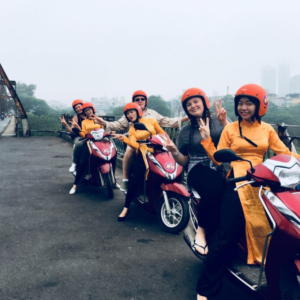

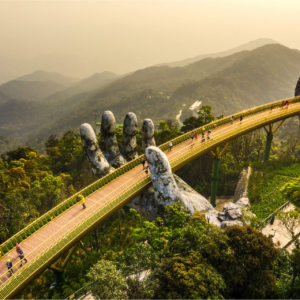
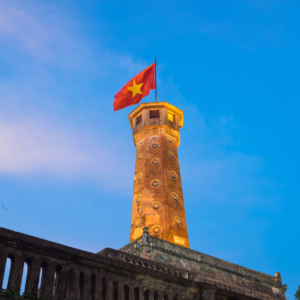
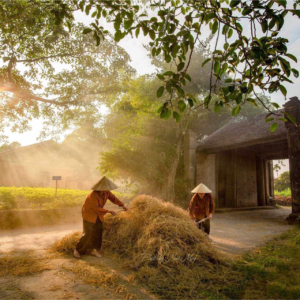
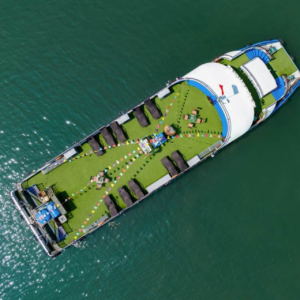
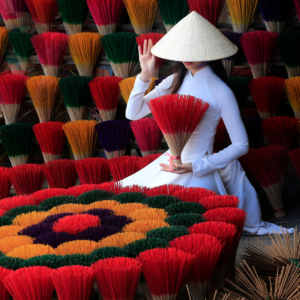
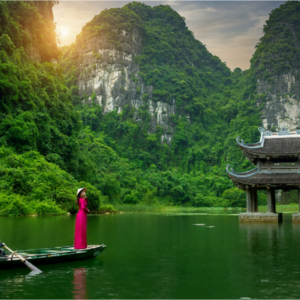
Be the first to review “Bac Ha Market & Sapa Trekking Midscale Tour From Hanoi – 2 Nights 3 Days”